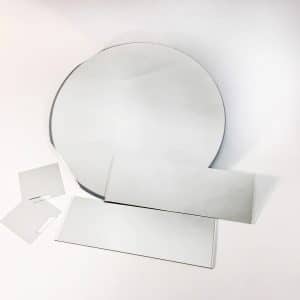Is Silver the Metal Surface of Choice for Optical Devices?
Metal surfaces play a crucial role in various scientific and technological applications. Coatings and patterning techniques offer a means to modify the properties of metal surfaces for specific purposes. In the realm of optical devices, metal surfaces have garnered significant attention due to their unique characteristics. This blog post looks at the topic of metal surfaces, with a particular focus on silver, and explores its suitability as a choice for optical devices.

What are optical devices?
Optical devices cover a wide range of instruments and components that manipulate light for various purposes. These devices work based on the principles of optics to control the propagation, transmission, and detection of light. Examples of optical devices include lenses, mirrors, filters, waveguides, and sensors, and metal surfaces have an important role in their design and functionality. As a result, they have piqued interest and further research in scientific communities.
Properties of silver
Silver possesses a unique set of properties that make it an attractive material for optical applications. Primarily, silver exhibits the lowest optical losses among noble metals in the visible and near-infrared regions. Its plasmonic properties enable the efficient manipulation and control of light at the nanoscale. Additionally, silver demonstrates excellent reflectivity, making it ideal for applications requiring high-quality mirrors and reflective surfaces.
From a physical perspective, silver is a malleable and ductile metal, which enables easy fabrication and shaping into desired forms. It possesses a high electrical and thermal conductivity, which is necessary for devices that need efficient heat dissipation and electrical signal transmission. Moreover, silver exhibits good stability at ambient conditions, although it does tend to oxidize over time, leading to tarnishing and reduced reflectivity.
Silver as a plasmonic material
Silver’s plasmonic properties have been heavily researched for optical devices. Plasmonics involves the interaction between light and free electrons in a metal, resulting in enhanced electromagnetic fields and light confinement. These properties enable the manipulation of light at the nanoscale and have applications in areas such as sensing, imaging, and data transmission.
Silver nanoparticles in optical devices
Silver nanoparticles, with their unique size-dependent optical properties, offer exciting opportunities in optical device design. The ability to tune the size and shape of silver nanoparticles allows for precise control over their interaction with light. This property has been used in diverse fields, such as biomedicine, molecular diagnostics, and photonic devices.
Silver coatings in optical devices
Silver coatings find widespread use in optical devices due to their excellent reflectivity and low optical losses. These coatings can enhance the performance of lenses, mirrors, and optical filters by optimizing light transmission and minimizing unwanted reflections. Additionally, silver coatings have been utilized in the development of plasmonic waveguides, which enable the efficient guiding and confinement of light for various applications.
Why use Silver Surfaces in Optical Devices?
Three key reasons why silver metal surfaces are used in optical devices have already been mentioned in this blog post, but to summarize them, they are:
- High reflectivity: Silver coatings offer excellent reflectivity, ensuring efficient light reflection and enabling the design of high-performance mirrors and reflective surfaces.
- Low optical losses: Silver’s exceptional optical properties result in minimal losses in the visible and near-infrared regions, enabling efficient light transmission.
- Plasmonic properties: Silver’s plasmonic behavior enables precise control over light at the nanoscale, facilitating novel applications in sensing, imaging, and data transmission.
Platypus Technologies: Using Silver in Optical Devices
At Platypus Technologies, we are a team of dedicated scientists determined to enhance all things related to surface science. This includes biological and chemical sensors, electrochemistry, nanochemistry, and related components such as thin films.
One of the products we offer is silver thin films, typically for silicon wafers or microscope slides, but we also offer custom coatings to suit your specific needs. We use silver with 99.99% purity to produce thin films via electron-beam deposition in a dedicated cleanroom to ensure the highest quality films are made. The high performance of silver thin films is crucial in manufacturing optical devices, as well as other applications such as sensor chips and substrates for molecular characterization.
Contact a member of Platypus Technologies today to learn more about using silver for your application.